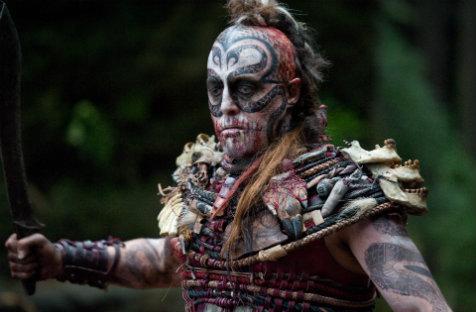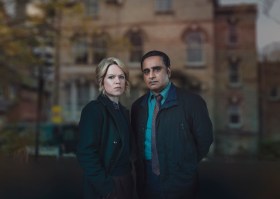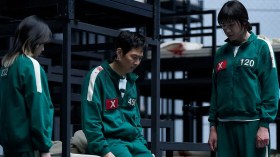In filmmaking, as in life, the devil is often in the detail. A multi-million dollar, star-studded effort can bypass the trappings of the mainstream industry through independent funding, just as a series of questionable choices can lead to a noble end through a single kind deed. Cloud Atlas endeavours to encompass both; the very concept of intricacies overcoming the broad and bland not only drives the film’s narrative but prolonged its production. Such ambition is to be applauded, even if the outcome proves simultaneously clever, complex, contrived and cloying.
Adapting David Mitchell’s allegedly unfilmable novel for the screen was never going to be an easy feat, a challenge the writing/directing/producing trio of Tom Tykwer (Three) and siblings Lana and Andy Wachowski (Speed Racer) clearly relished. Though the source material flitted between six separate stories and time spans from the remote islands of the South Pacific circa 1850 to the conflicted countryside of a post-apocalyptic future 500 years later, the helmers embraced the grand scope and scale, its karmic themes and echoes of déjà vu incorporated into the casting and filming process.
A repertoire of players – Tom Hanks (Extremely Loud and Incredibly Close), Halle Berry (Movie 43), Jim Broadbent (The Iron Lady), Hugo Weaving (The Hobbit: An Unexpected Journey), Jim Sturgess (One Day), Doona Bae (The Host), Ben Whishaw (Skyfall), Susan Sarandon (Arbitrage) and Hugh Grant (The Pirates! Band of Misfits) among them – was assembled, and the feature’s sextet of morality tales split between two directing camps. Laden with make-up and prosthetics – some effective, others borderline offensive – the actors transition between roles, filmmakers and vignettes, their prescient presence the visual manifestation of the feature’s treatise on predestined connective threads.
Cloud Atlas’ matryoshka doll-style amalgam of narratives, genres and performances is awash in aspiration, celebrating the cause-and-effect impact of artistry. It is not by accident that creativity triumphs in the combination of stories, or that acts of inspiration – of prose, music, movies and religious movements – contextualise the film’s philosophical underpinnings. Yet it’s in execution rather than in idea that the pertinence and profundity waver. Some technical choices are heavy-handed in their obviousness (cross-cutting that ensures every tale is mirrored in its highs and lows); others prove slick but overly sentimental (repetitive dialogue that affords a multi-generation Groundhog Day-esque experience).
In emphasising recurrence and correlation, Cloud Atlas attempts to focus on the bigger picture; however the film’s strengths lie in the opposite extreme. The tenderness of Wishaw’s performance as a troubled amanuensis, the energy and pace of the Wachowskis’ chase sequences, and the conviction of the futuristic commentary on commercialism and consumption surpass the gimmickry of Berry and Hanks being forced into ill-fitting parts for the sake of the spectacle, and the uneasy deviation in tone between timeframes. Indeed, despite its thematic momentum, the feature is best served by its component parts rather than the resulting whole. Its exquisite intimacies make Cloud Atlas an audacious epic to savour; its averageness only appears when considered as a whole.
Rating: 3 ½ stars out of 5
Cloud Atlas
Director: Tom Tykwer, Andy Wachowski & Lana Wachowski
USA, 2012, 172 min
In cinemas February 28
Distributor: Roadshow
Actors:
Director:
Format:
Country:
Release:





